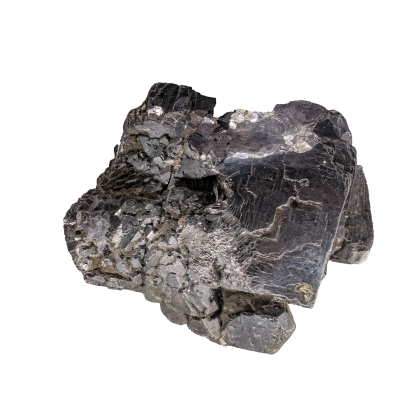Pb • Atomic Number 82

Lead
Lead is a bluish-white heavy metal that tarnishes to gray when exposed to air. It is soft, easily deformable, and has a relatively low melting point. It is one of the densest stable elements. The chemical symbol Pb comes from the Latin word "Plumbum."
The main application of lead is in automotive batteries (lead-acid batteries). Lead also plays a role in radiation shielding and special alloys.
Due to its toxicity, lead is increasingly being replaced by other materials.
Nearly half of the global lead supply is mined in China. Other important producing countries include Australia, the USA, and Peru.
The largest lead mine in the world is the Cannington Mine in Australia, owned by the mining company South32.
The largest lead producer in the world is the Chinese company China Minmetals Corporation (Minmetals).
Lead has been known since prehistoric times because it can be easily extracted from ores. The earliest findings come from present-day Turkey, where lead was used for jewelry and weights.
The Romans were the first to use lead on a large scale. They built water pipes with the metal and used it in tableware and jewelry. They also added lead sugar (lead(II) acetate) to sweeten wine. Due to its widespread use, it likely caused extensive health damage among the population.
In the Middle Ages, lead played an important role in alchemy. Alchemists tried to turn lead into gold.
With industrialization, the mass use of lead began. The raw material was used in printing, ammunition, the glass industry, batteries, and as paint (white lead).
In the 20th century, lead was widely used as a fuel additive in gasoline. Tetraethyl lead acted as an anti-knock agent and prevented so-called engine knocking, an uncontrolled combustion of fuel in gasoline engines that damages engine parts and increases fuel consumption. The toxicity of leaded gasoline was known when its anti-knock effect was discovered. Nevertheless, it took until the late 1970s before some countries began banning leaded gasoline.
Studies of ice cores from the Arctic show that lead pollution peaked in the early 1970s. It was 40 times higher than during the Roman Empire — mainly due to the widespread use of leaded gasoline in motor vehicles. Research indicates that lead exposure reduces intelligence.
80 percent of lead production is used for manufacturing lead-acid batteries for vehicles.
Due to its high density, lead is well suited for shielding against X-rays and gamma rays.
In the chemical industry, lead sheets are used for corrosion-resistant containers.
Lead-tin alloys are used as solder in electronics. Lead ammunition is increasingly being replaced by other non-toxic alternatives.
Special applications of lead include lead crystal glass, to improve optical quality, as well as counterweights in car wheels.
The lion’s share of primary lead production comes from galena ores, which can contain up to 85 percent lead. Common accompanying elements in galena ores are zinc and silver. The precious metal silver increases the economic viability of mining.
Galena is usually concentrated by flotation and then roasted to produce lead oxide (PbO).
Almost half of the global lead production is mined in China. Other important producing countries are Australia, the USA, and Peru.
The largest lead mine in the world is the Cannington Mine in Australia. It is owned by the mining company South32 and has been in operation since 1997.
The world’s largest lead producer is the Chinese company China Minmetals Corporation (also known as Minmetals), which controls large lead production capacities through subsidiaries such as MMG Limited.
Glencore operates, besides large lead mines in Australia, the world’s largest lead refinery in Port Pirie, also in Australia.
Global annual lead production amounts to approximately 13 million tons.
The replacement by plastics has reduced the use of lead in cable sheathing and cans.
Tin has replaced lead in solder used for drinking water systems.
The electronics industry is increasingly using lead-free solders and flat screens that do not require lead shielding.
Steel and zinc are common substitutes for lead in wheel weights.

